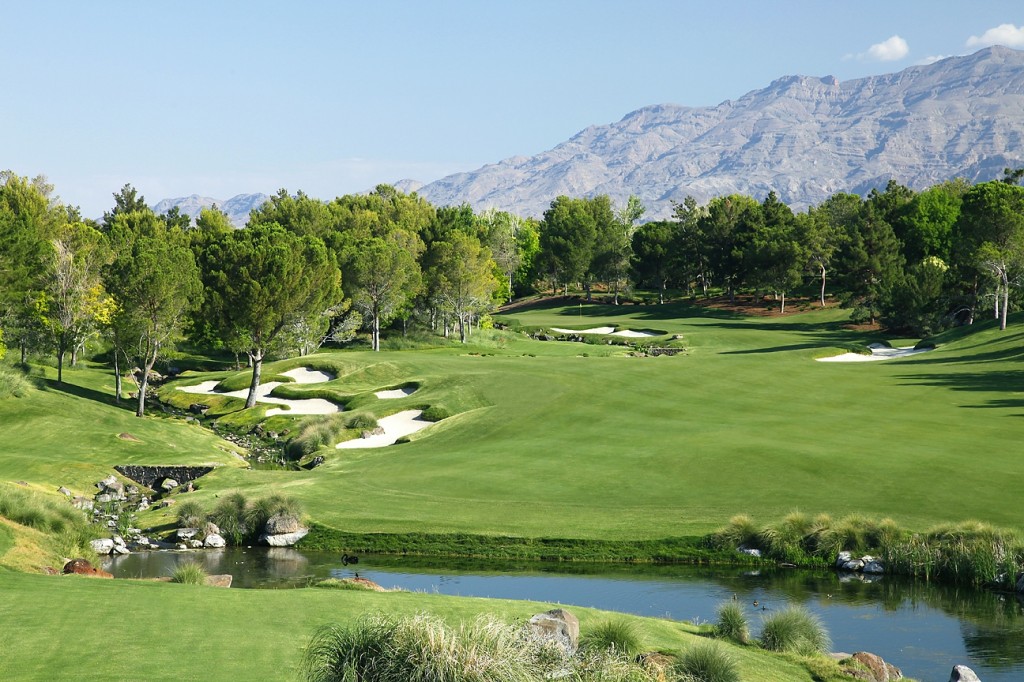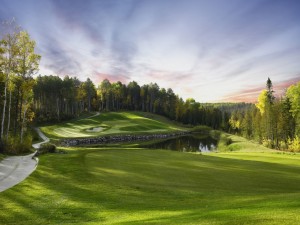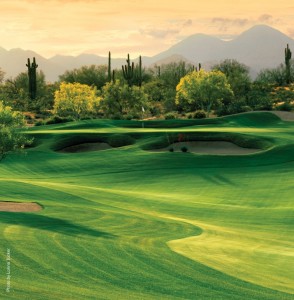In a casino, the odds are stacked against you at every single game from blackjack to slots to craps, but believe it or not, there is one sure thing: golf.

Shadow Creek in Las Vegas, was estimated to be the most expensive golf course ever built when it opened 20 years ago, and it remains the best casino course you can play.
I love casino golf. In fact, I could very easily make the argument that casinos have been the very best thing to happen to the golf course business in 20 years. Tiger Woods’ popularity has not translated into more people playing golf, but casino popularity has directly translated into more great courses you can play – and often cheaply. For years the golf course business has been mired in a slowdown, and it is just getting worse with the economy the way it is. There is almost not such thing as true daily fee courses being built anymore, since the cost of building and operating golf courses has gotten out of hand, and we already have more than we use. So today, golf courses are built for one of three reasons: to anchor a resort, a business that is doing terribly right now; to sell homes in a residential community, a business that is doing terribly right now, or for a private members only golf club, a business that, you guessed it, is doing terribly right now.

Let's face it: if it weren't for casinos, no one would build a course as beautiful - or bargain priced - as the Wilderness at Fortune Bay in the middle of rural Minnesota.
So what business is not doing terribly? Casinos. And casinos have picked up the slack, responsible for many of the best courses built in the least two decades.
Think I’m exaggerating? Shadow Creek in Las Vegas, the first high profile casino course, is celebrating its 20th anniversary. It is the only casino course ranked in the top ten publics in the country by Golf Magazine, but since Shadow Creek, the quality of these courses has skyrocketed. Today, an astonishing 8 of the Top 50 public courses are at casinos, and 17 of the Top 100. The bottom line is that casino courses represent nearly 20%, or one out of every five of the very best courses you can play, yet casino courses comprises less than 1% of all public courses in the country. That means that on average they are incredibly good.
They also tend to be bargains, thought there are certainly exceptions. Shadow Creek, Cascata and Wynn Las Vegas, all in Sin City, represent one end of the casino golf spectrum, the one for high rollers, as the most expensive publics in the country period, with greens fees that reach $500. When you figure in lodging and the real cost of playing, they can still be cheaper than Pebble Beach or a few others, but no matter how you slice it, $500 is a lot to play golf. These are joined by the likes of Mississippi’s Fallen Oak and Indiana’s Pete Dye Course at French Lick in the $300-plus stratosphere of casino golf.
At the opposite end are fanatic buys like Idaho’s Circling Raven, Minnesota’s Wilderness at Fortune Bay and Mississippi’s superb 36 at Dancing Rabbit. In the middle you have courses that are neither cheap nor expensive, but so good they are still great values, such as Nevada’s Primm courses and the incredible duo at We-Ko-Pa in north Scottsdale.

Scottsdale's Wekopa is the best public 36-hole facility in Arizona. There, I said it.
We-Ko-Pa is a great example: in one of the nation’s best golf markets, surrounded by over 100 quality public and resort courses, with many top 36 hole facilities including Graywhawk, Troon North, TPC Scottsdale and the Boulders, We-Ko-Pa is the best, period. In New York, our third most populous state, the largest golf resort – and a very good one – is casino based Turning Stone. Mississippi golf is largely powered by casinos, and so, increasingly, is southern California.
What is the secret to casino golf success? Most golf course construction involves taking the best land and saving it for either homes or hotels, and giving designers the scraps. Developers also have good reason to try to keep budgets as low as possible. On the other hand, casinos almost never sell real estate, and usually give the architects their pick of choice land. Since they often have more profits to reinvest than they know what to do with (and in many cases with Native American casinos, laws require them to reinvest on site), so they essentially give architects a blank check.
Both Shadow Creek and Cascata were estimated to be the most expensive construction projects in the history of golf when they were built, so I think it is fair to say we owe that mentality to casinos. When Rees Jones built 36-holes at the Foxwoods casino resort in Connecticut, he was given 2000 pristine acres to work with, while non-casino courses are often built on as little as 150. He had to do an enormous amount of blasting because of all the rock, and heavy equipment earthmoving, all very expensive, and he told me that no private developer would ever have built those courses.
This is why casinos consistently attract the best designers, and the best designers love doing casino courses: they get the best land and unlimited budgets. Tom Fazio has been at the forefront, doing Shadow Creek, Wynn Las Vegas, Beau Rivage, the 36 at Primm, Dancing Rabbit, a course at Turning Stone and several others. Rees Jones did Cascata, Rio Secco and the 36 at Foxwoods. Pete Dye, Arthur Hills, Robert Trent Jones, Jr., Jack Nicklaus and the dynamite duo of Bill Coore and Ben Crenshaw have all jumped on the casino bandwagon. And so should you.
